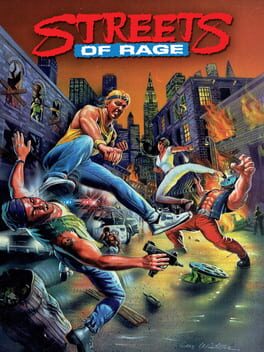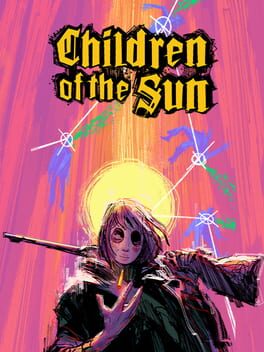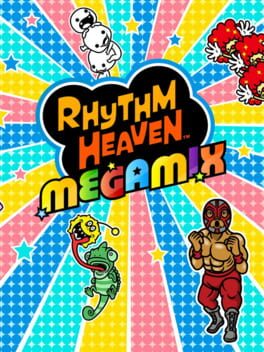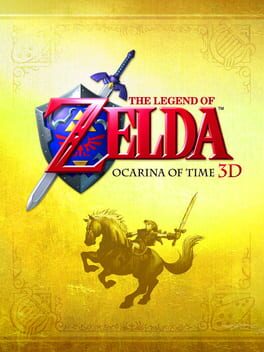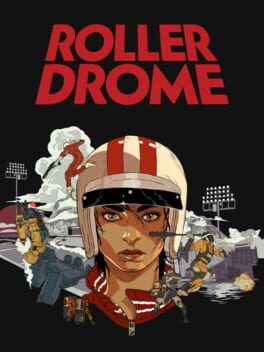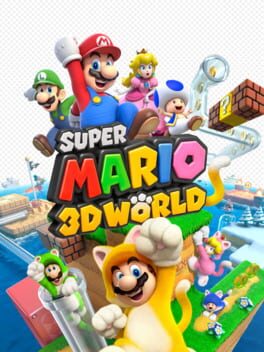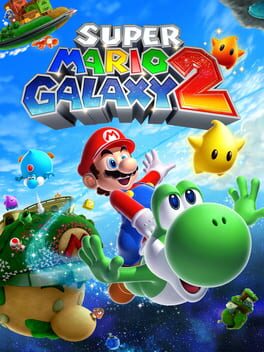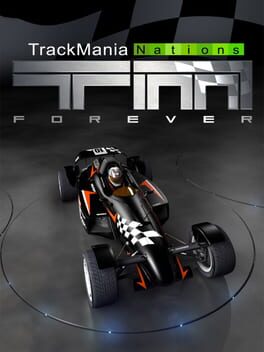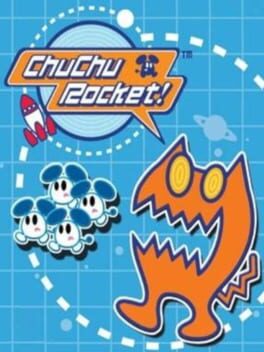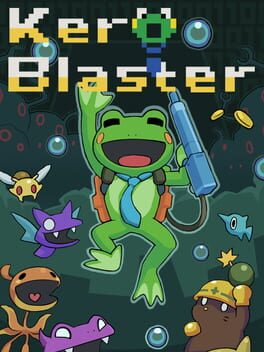antoinebeaumal
BACKER
Usually, I am not inclined towards superstitions and beliefs, but at the end of Ocarina of Time, Princess Zelda asked me to return to my time. Whether it's prophecy or sheer coincidence, we must admit that the princess’s exit is quite ironic when you’ve just spent several dozen hours on a game released over 25 years ago. What did she mean by returning to my time? Maybe I should simply enjoy current games? Like Baldur’s Gate 3 or Tears of the Kingdom? Stop stubbornly playing old games? I remain without an answer.
Anyway, we should normally keep quiet about never having played Ocarina of Time. It's the classic of classics. The "Citizen Kane" or "In Search of Lost Time" of gaming. If you skip this game, your gamer card gets revoked. Yet, like the aforementioned classics, I admit there's a strangely off-putting aspect to diving into the "genre's canons." As a critic, you find yourself in an uncomfortable position. Should you praise the game? Everyone has already done that (and better than you). Should you, on the contrary, bash it and make "hate content"? No, thank you. I have no desire to do either. I can only share my experience, which is the only "unique" thing that could be said about this game.
Ocarina of Time is not "just" the transition from 2D to 3D for a series; it's the "vanilla" experience of the 3D adventure game that remains the standard and, even today, an enjoyable experience. I find it crazy to think that this game is both the "universal tutorial" of 3D gaming while also being at the forefront of revolutionary mechanics: targeting, streamlined inventory management (compared to CRPGs of the time), dungeon level design, etc. I was impressed by how playable a 3D game controlled with a single stick remains without too many camera problems.
And yet, narratively, the game stays in a total classicism that I find, in this case, too "vanilla." I have trouble integrating into this world that lacks bizarreness. Everything is a bit too smooth for my taste. If the story didn't captivate me, it's the overall atmosphere of the dungeons that particularly stood out: the music, the enemies, the lighting effects, and the camera work, all are impressively mastered. The "open world" is very limited, and I admit I rushed through the dungeons without paying much attention to the side quests (I didn’t even get Epona). This didn't spoil my enjoyment.
Playing classics also raises the question of the platform on which to play them. After completing a third of the game on 3DS, I borrowed an N64 with an original cartridge. After spending a lot of time trying to get a decent image on my OLED screen, I eventually followed the path of reason by listening to @Katsono and @Armakeen and playing the version made by the Ship of Harkinian team with 4K textures added. I recommend anyone wanting to embark on this adventure to do the same: the game is beautiful, smooth, and you can assign the boots to the "C" button (which makes the Water Temple a bit less tedious). Hats off.
I look forward to diving into Majora’s Mask soon, probably in its "decompiled" version.
Anyway, we should normally keep quiet about never having played Ocarina of Time. It's the classic of classics. The "Citizen Kane" or "In Search of Lost Time" of gaming. If you skip this game, your gamer card gets revoked. Yet, like the aforementioned classics, I admit there's a strangely off-putting aspect to diving into the "genre's canons." As a critic, you find yourself in an uncomfortable position. Should you praise the game? Everyone has already done that (and better than you). Should you, on the contrary, bash it and make "hate content"? No, thank you. I have no desire to do either. I can only share my experience, which is the only "unique" thing that could be said about this game.
Ocarina of Time is not "just" the transition from 2D to 3D for a series; it's the "vanilla" experience of the 3D adventure game that remains the standard and, even today, an enjoyable experience. I find it crazy to think that this game is both the "universal tutorial" of 3D gaming while also being at the forefront of revolutionary mechanics: targeting, streamlined inventory management (compared to CRPGs of the time), dungeon level design, etc. I was impressed by how playable a 3D game controlled with a single stick remains without too many camera problems.
And yet, narratively, the game stays in a total classicism that I find, in this case, too "vanilla." I have trouble integrating into this world that lacks bizarreness. Everything is a bit too smooth for my taste. If the story didn't captivate me, it's the overall atmosphere of the dungeons that particularly stood out: the music, the enemies, the lighting effects, and the camera work, all are impressively mastered. The "open world" is very limited, and I admit I rushed through the dungeons without paying much attention to the side quests (I didn’t even get Epona). This didn't spoil my enjoyment.
Playing classics also raises the question of the platform on which to play them. After completing a third of the game on 3DS, I borrowed an N64 with an original cartridge. After spending a lot of time trying to get a decent image on my OLED screen, I eventually followed the path of reason by listening to @Katsono and @Armakeen and playing the version made by the Ship of Harkinian team with 4K textures added. I recommend anyone wanting to embark on this adventure to do the same: the game is beautiful, smooth, and you can assign the boots to the "C" button (which makes the Water Temple a bit less tedious). Hats off.
I look forward to diving into Majora’s Mask soon, probably in its "decompiled" version.
1991
Street of Rage left a mark on me right from the title screen when I saw that the composer of the music (Yuzo Koshiro) was credited upfront. It makes you wonder if the game itself is just an excuse to listen to his absolutely incredible house music. 'The Attack of the Barbarian' and 'Beatnik on the Ship' are truly little wonders of the genre.
Even though I'm not an expert on Mega Drive games, I did check out all the games in the Mega Drive Classics pack, and I have to admit the visuals are impressive. All the backgrounds are remarkably animated. Obviously, it’s a bit of a shame that the background is 'essentially decorative.' I would have liked more background/action interaction like the metal press in Stage 6.
Now, there is also the game itself, and I immediately understood why I have always been more of a Nintendo player than a Sega player: it's excessively difficult. While I got through the first half of the game without too much trouble, the second half is really tough (and I know very well that SOR 1 is far from the most difficult game on the Mega Drive). I had to use save states from level 6 onward to reach the final boss without ever managing to defeat him.
It’s clearly not the fault of this game, but the inability to save or have a password system is definitely a barrier for me. I find it difficult to adapt to this "arcade gamer but on console mentality". Why are the console versions of this type of game harder to finish than the original arcade game? Were the developers of the time afraid that console players would acquire so much skill at home that they would be able to beat the arcade machine with a single coin?
If you have any recommendations for games of this kind that might be more accessible, I’m interested. I like to challenge myself, but '3 lives, 3 continues, no password = no thanks.'
Even though I'm not an expert on Mega Drive games, I did check out all the games in the Mega Drive Classics pack, and I have to admit the visuals are impressive. All the backgrounds are remarkably animated. Obviously, it’s a bit of a shame that the background is 'essentially decorative.' I would have liked more background/action interaction like the metal press in Stage 6.
Now, there is also the game itself, and I immediately understood why I have always been more of a Nintendo player than a Sega player: it's excessively difficult. While I got through the first half of the game without too much trouble, the second half is really tough (and I know very well that SOR 1 is far from the most difficult game on the Mega Drive). I had to use save states from level 6 onward to reach the final boss without ever managing to defeat him.
It’s clearly not the fault of this game, but the inability to save or have a password system is definitely a barrier for me. I find it difficult to adapt to this "arcade gamer but on console mentality". Why are the console versions of this type of game harder to finish than the original arcade game? Were the developers of the time afraid that console players would acquire so much skill at home that they would be able to beat the arcade machine with a single coin?
If you have any recommendations for games of this kind that might be more accessible, I’m interested. I like to challenge myself, but '3 lives, 3 continues, no password = no thanks.'
2001
I am not really a "New Game Plus guy." Usually, I finish a game (rarely at 100%) and move on to the next one. I absolutely do not disparage this way of playing; quite the contrary, I have played and replayed the same games for years on end (like the 10,000 hours spent on vanilla WoW, oops). Over time, I have increasingly wanted to explore new games from different eras and styles, not necessarily staying stuck in a comfort zone or the same genre. With Devil May Cry, I discovered another approach, another perspective on playing a game: some games simply become better in New Game Plus.
I still have my physical PS2 copy that I bought almost on the day it was released, thanks to the rave reviews of the time. Without the memory cards from back then, I can’t say how far I got, but I doubt I got past the first boss. If I’m not mistaken, GTA 3 was already announced, and I then spent a good part of the end of 2001 traversing the streets of Liberty City.
The game is simply incredible. Its gothic and cool style is unique and holds up from beginning to end with its very "cheesy" side. It's primarily its combat gameplay that is very addictive: it's both easy to get into but difficult to master.
I never would have thought I would like this very arcade-oriented type of game. As soon as I finished (with difficulty) the game in normal mode, I immediately started again in hard mode, something I almost never do.
Having tried to replay it with my PS2 copy, I highly recommend the HD collection, which fixes almost all the framerate issues.
I still have my physical PS2 copy that I bought almost on the day it was released, thanks to the rave reviews of the time. Without the memory cards from back then, I can’t say how far I got, but I doubt I got past the first boss. If I’m not mistaken, GTA 3 was already announced, and I then spent a good part of the end of 2001 traversing the streets of Liberty City.
The game is simply incredible. Its gothic and cool style is unique and holds up from beginning to end with its very "cheesy" side. It's primarily its combat gameplay that is very addictive: it's both easy to get into but difficult to master.
I never would have thought I would like this very arcade-oriented type of game. As soon as I finished (with difficulty) the game in normal mode, I immediately started again in hard mode, something I almost never do.
Having tried to replay it with my PS2 copy, I highly recommend the HD collection, which fixes almost all the framerate issues.
2024
By trying too hard to be clever, Indika left me completely out of the game. I felt like the game refused to be immersive. Several elements always kept me outside of this story which, on paper, should appeal to me. Indika is the product of a team of Russian developers exiled in Kazakhstan who want to denounce the Moscow Patriarchy through a politically critical game, part of whose profits go to a charity helping Ukrainian children.
The project is promising: going back in time (late 19th century?) and showing that Tsarist Russia (pre-communist) is strongly marked by the Orthodox religion. This church supposedly dictates to the Russian people the codes of conduct whose backbone is unquestionable obedience. As a churchwoman, Indika is therefore largely subject to these codes, and the game tells her "philosophical crisis of faith" through a pilgrimage between her convent and a city where a religious event is taking place. There is also a second, internal journey between Indika and a talkative narrator who keeps questioning the nun's certainties. From a literary point of view, it is situated between Dostoevsky (for the despair), Tolstoy (for the theological questions), the Enlightenment (for the aspect of dialogue and questioning reason), and André Breton (for the distortion of reality). There are also cinematographic references such as Yórgos Lánthimos and A24 productions.
Of course, there is a critical and political charge against the current Russian government. However, the criticism remains cautious: it keeps a safe distance from direct confrontation with the Putin regime. I am in no position to judge this because I believe there is surely a real danger in criticizing such a regime, even if one is in exile.
But despite all these good intentions, I must admit that the game slipped out of my hands several times. There is a real problem with immersion: I did not believe in this story at all. Maybe it's pure snobbery, but I would have needed dialogues in the original languages. Ilya almost has a "cockney accent" and Indika speaks like any character on Netflix.
This imagined and hallucinated Russia is still interesting. Some settings are really well done, especially the city scenes. I would have liked to explore them more but...
More than a problem of distance with the narration, I also feel that the developers were constantly mocking the players (and thus me). The game does not embrace its backbone, which is purely and simply a walking sim. Instead of working on this genre (which is far from being an established and definitive form), Indika (the game) constantly puts on a show: a few puzzles (with horrible controls), 2D platforming scenes (with hitboxes as faulty as those in Wizard of OZ on SNES), 3D isometric racing game segments, a "rhythm platformer" segment, and more. As a result, instead of being constantly surprised, we are constantly disappointed, even though I recognize some interesting moments here and there (the moments where Indika is torn between the devil and prayers and that changes the environment, honestly not bad at all).
This baroque mix of genres, not to say failed, adds to the fact that we are constantly pulled away from the game's story until we no longer care about it. The narrator's outbursts also become annoying, especially when this supposed internal voice is a male voice (for a female character) that sometimes has totally lewd aspects. Additionally, there is a rape scene that adds nothing to the story except wanting to remain "edgy".
Maybe there are some among you who really liked that the point system and skill tree serve no purpose (wow, how subversive!), but I rather felt that I was being mocked, not only as a "visual novel" enthusiast but also as a gamer. For the record, the first gameplay moment = "Fetch water from the well 5 times. I spill the water on the ground. Hahahahaha actually it's useless xD". In short, this annoys me, I need to calm down.
One scene particularly struck me. Crossing a huge sturgeon factory, you have to make your way by navigating circular platforms while avoiding fish. I had to retry several times due to the poor controls. After this forgettable scene, you enter a second similar room. At that moment, Indika exclaims: 'Oh no, not again.' I was thinking exactly the same thing as Indika: 'oh no, not again.'
The project is promising: going back in time (late 19th century?) and showing that Tsarist Russia (pre-communist) is strongly marked by the Orthodox religion. This church supposedly dictates to the Russian people the codes of conduct whose backbone is unquestionable obedience. As a churchwoman, Indika is therefore largely subject to these codes, and the game tells her "philosophical crisis of faith" through a pilgrimage between her convent and a city where a religious event is taking place. There is also a second, internal journey between Indika and a talkative narrator who keeps questioning the nun's certainties. From a literary point of view, it is situated between Dostoevsky (for the despair), Tolstoy (for the theological questions), the Enlightenment (for the aspect of dialogue and questioning reason), and André Breton (for the distortion of reality). There are also cinematographic references such as Yórgos Lánthimos and A24 productions.
Of course, there is a critical and political charge against the current Russian government. However, the criticism remains cautious: it keeps a safe distance from direct confrontation with the Putin regime. I am in no position to judge this because I believe there is surely a real danger in criticizing such a regime, even if one is in exile.
But despite all these good intentions, I must admit that the game slipped out of my hands several times. There is a real problem with immersion: I did not believe in this story at all. Maybe it's pure snobbery, but I would have needed dialogues in the original languages. Ilya almost has a "cockney accent" and Indika speaks like any character on Netflix.
This imagined and hallucinated Russia is still interesting. Some settings are really well done, especially the city scenes. I would have liked to explore them more but...
More than a problem of distance with the narration, I also feel that the developers were constantly mocking the players (and thus me). The game does not embrace its backbone, which is purely and simply a walking sim. Instead of working on this genre (which is far from being an established and definitive form), Indika (the game) constantly puts on a show: a few puzzles (with horrible controls), 2D platforming scenes (with hitboxes as faulty as those in Wizard of OZ on SNES), 3D isometric racing game segments, a "rhythm platformer" segment, and more. As a result, instead of being constantly surprised, we are constantly disappointed, even though I recognize some interesting moments here and there (the moments where Indika is torn between the devil and prayers and that changes the environment, honestly not bad at all).
This baroque mix of genres, not to say failed, adds to the fact that we are constantly pulled away from the game's story until we no longer care about it. The narrator's outbursts also become annoying, especially when this supposed internal voice is a male voice (for a female character) that sometimes has totally lewd aspects. Additionally, there is a rape scene that adds nothing to the story except wanting to remain "edgy".
Maybe there are some among you who really liked that the point system and skill tree serve no purpose (wow, how subversive!), but I rather felt that I was being mocked, not only as a "visual novel" enthusiast but also as a gamer. For the record, the first gameplay moment = "Fetch water from the well 5 times. I spill the water on the ground. Hahahahaha actually it's useless xD". In short, this annoys me, I need to calm down.
One scene particularly struck me. Crossing a huge sturgeon factory, you have to make your way by navigating circular platforms while avoiding fish. I had to retry several times due to the poor controls. After this forgettable scene, you enter a second similar room. At that moment, Indika exclaims: 'Oh no, not again.' I was thinking exactly the same thing as Indika: 'oh no, not again.'
2024
Children of the Sun embodies everything I love and expect in an indie game: a strong aesthetic choice that perfectly complements unique gameplay. Nothing more, nothing less. Here, it's the story of a perfect revenge: a single bullet (well, per level) to take down a cult leader.
The artistic direction is truly successful: a goth girl lost in the middle of deep America, a story that is fragmented into short sequences, and an absolutely incredible sound atmosphere. Everything is played on instruments: the impact of the bullet is a cymbal crash, and the girl's movement is depicted with rapid notes on a guitar (probably baritone). I recommend to the to the musician (Adian Baker) behind the music and the sound ambiance. It's almost as heavy as the OST of the first season of True Detective or the theme of Tristram from Diablo 1.
It's especially the tightly knit (not to say limited) gameplay that adds to its appeal. Everything is played with the mouse only. Children of the Sun combines puzzle gaming with the adrenaline of a shooter. The satisfaction of finally finishing certain levels is incredible. The player's frustration is, in my opinion, perfectly managed: it's neither too easy nor too complicated. René Rother gradually introduces a gameplay grammar that builds up without ever becoming overwhelming. You gradually become a kind of psychopath scanning the sky for birds to explode, scrutinizing every car, and blowing up NPCs' vital parts.
About 6 hours of tension consumed in small slices. I hope for a sequel!
The artistic direction is truly successful: a goth girl lost in the middle of deep America, a story that is fragmented into short sequences, and an absolutely incredible sound atmosphere. Everything is played on instruments: the impact of the bullet is a cymbal crash, and the girl's movement is depicted with rapid notes on a guitar (probably baritone). I recommend to the to the musician (Adian Baker) behind the music and the sound ambiance. It's almost as heavy as the OST of the first season of True Detective or the theme of Tristram from Diablo 1.
It's especially the tightly knit (not to say limited) gameplay that adds to its appeal. Everything is played with the mouse only. Children of the Sun combines puzzle gaming with the adrenaline of a shooter. The satisfaction of finally finishing certain levels is incredible. The player's frustration is, in my opinion, perfectly managed: it's neither too easy nor too complicated. René Rother gradually introduces a gameplay grammar that builds up without ever becoming overwhelming. You gradually become a kind of psychopath scanning the sky for birds to explode, scrutinizing every car, and blowing up NPCs' vital parts.
About 6 hours of tension consumed in small slices. I hope for a sequel!
I've always had a penchant for games based on 'mini-games.' RHM is a good compromise between a Wario Ware and a musical game like 'Dance Dance Revolution' or even 'Guitar Hero.'
I have also a certain admiration for developers who create a particular world, characters, game rules, and even a tutorial so that the player ultimately spends less than 2 minutes there. Moreover, even though the scenery constantly changes (except for certain come-backs and remixes), we almost always do the same thing: learn via a tutorial 2 to 3 rhythm patterns that we execute directly afterward. Yet, this 'simple' mission is paradoxically very restful and calming. The further we advance in the mini-games, the more we learn to listen more attentively. The game demands a short but intense minute of attention. Fair enough. RHM falls into this category where one can (and should) play a maximum of 15 minutes per day, giving the illusion of progress in a domain (here, rhythm).
I was particularly a fan of the remix passages where different mini-games are mixed. There's an element of surprise that requires considerable responsiveness. I would have hoped for more moments like that.
However, this game has led me to deep reflections on video games in general. Is a good game, of action for example, not simply a game that is well-paced? a certain rhythm ? I firmly believe that a good game also necessarily has a good flow. RHM confirms the interesting thought of Matthew Matosis, who argues that Audio Cues are absolutely crucial in a good game as humans react more quickly to auditory stimuli than visual ones. Even if RHM is much simpler than a complex action game (here, pressing one button is enough in the majority of cases), this kind of game confirms this theory: a good game doesn't use audio cues as the 'moment to press the button' but as hints for an action that is about to happen. If you get into the 'flow,' you can react extremely precisely. A bad drummer looks at the metronome, the good one might just close his eyes.
Anyway, I'm glad I managed to finish the game at least. Who knows, it's likely that one day, old age will prevent me from playing this kind of game. Either because my hearing will be completely impaired, or because my arthritic hands won't be able to keep up with the pace.
"Okay grandpa, thanks for your theories, it's time to go to bed."
I have also a certain admiration for developers who create a particular world, characters, game rules, and even a tutorial so that the player ultimately spends less than 2 minutes there. Moreover, even though the scenery constantly changes (except for certain come-backs and remixes), we almost always do the same thing: learn via a tutorial 2 to 3 rhythm patterns that we execute directly afterward. Yet, this 'simple' mission is paradoxically very restful and calming. The further we advance in the mini-games, the more we learn to listen more attentively. The game demands a short but intense minute of attention. Fair enough. RHM falls into this category where one can (and should) play a maximum of 15 minutes per day, giving the illusion of progress in a domain (here, rhythm).
I was particularly a fan of the remix passages where different mini-games are mixed. There's an element of surprise that requires considerable responsiveness. I would have hoped for more moments like that.
However, this game has led me to deep reflections on video games in general. Is a good game, of action for example, not simply a game that is well-paced? a certain rhythm ? I firmly believe that a good game also necessarily has a good flow. RHM confirms the interesting thought of Matthew Matosis, who argues that Audio Cues are absolutely crucial in a good game as humans react more quickly to auditory stimuli than visual ones. Even if RHM is much simpler than a complex action game (here, pressing one button is enough in the majority of cases), this kind of game confirms this theory: a good game doesn't use audio cues as the 'moment to press the button' but as hints for an action that is about to happen. If you get into the 'flow,' you can react extremely precisely. A bad drummer looks at the metronome, the good one might just close his eyes.
Anyway, I'm glad I managed to finish the game at least. Who knows, it's likely that one day, old age will prevent me from playing this kind of game. Either because my hearing will be completely impaired, or because my arthritic hands won't be able to keep up with the pace.
"Okay grandpa, thanks for your theories, it's time to go to bed."
I spent 10 hours in the game to come to the conclusion that OOT is amazing but that I won't be able to fully appreciate it by playing it 'handheld' on the 3DS. The immersion doesn't quite work for me, especially in the dungeons where I find the game's readability difficult on such a small screen. I imagine that if you've played the original, playing it in handheld mode is a pleasant extension of the experience, a way to rediscover it. In my case, I would just like to experience it in a way close to the original experience (if such a thing exists). Like a good snob, I think I'll play it on the original hardware at 20 fps.
2022
The artistic direction of this game immediately caught my attention: a reinterpretation of 80s science fiction comic books in the style of "heavy metal." If I were pretentious, I would mention well-known illustrators, but my middle-class, uncultivated side means I only know this aesthetic through the "major boobage" episode of South Park released in 2008.
As has been said many times before, this game is a rare blend of genres: action gameplay with ranking like Devil May Cry, tricks and collectibles akin to Tony Hawk Pro Skater, and slow-motion action scenes reminiscent of Max Payne. Given its mixture of genres, the developers reached a compromise : no balance bar for slides and automatic aiming. Although the Tony Hawk Pro Skater player within me somewhat craves the thrill of endless sliding and the impossibility of crashing to the ground, the game would be even more challenging than it already is.
The career mode left me somewhat skeptical: what is the goal of Rollerdrome? To kill enemies as quickly as possible? To perform the most stylish tricks? To survive? To achieve a high score, one must do a bit of everything simultaneously, constantly being in a state of tension.
In my opinion, the game would benefit from focusing more on the survival aspect of its character. It seems absurd that, for example, one can successfully collect all 5 coins, die, and still have that objective achieved. Dying should be more punitive. As survival is not necessary for fulfilling objectives, players end up replaying the same arenas multiple times with the goal of completing different objectives each time. This fragmentation is detrimental to the career mode. Instead of simply rewarding the player who manages in one run to 1. Survive, 2. Kill efficiently, and 3. Perform the most tricks, it encourages players to choose between these three objectives, which is a shame.
However, I believe the game excels in progressing the player, introducing them to new playstyles. Players gradually learn new skills and the use of new weapons. The level objectives serve to advance us. Some may argue that the game guides the player too much, but in my opinion, Rollerdrome must cater to two types of players: those who want to complete the career mode and those completionists who aim for an "S" tier in every level. The developers have managed to accommodate both types of players quite well.
I often read that the game is "too short" and "doesn't fully exploit its potential." I partially agree. More than its short lifespan, it's the repetition that can become tiresome. For example, the first arena introduces 2 types of enemies (melee guy and sniper girl), the second introduces the rocket launcher guy, and so on. Each level adds a new enemy type on top of the previous ones. It's important to remember that this game was made by a small team of 44 people. The focus (and thankfully so) was on creating a unique gameplay mechanic. I prefer this to a game that lasts over 50 hours but recycles what has already been done in the past.
I really hope there will be a sequel or DLC for Rollerdrome. I would love to have more boss fights or even engage in a duel with an opponent.
As has been said many times before, this game is a rare blend of genres: action gameplay with ranking like Devil May Cry, tricks and collectibles akin to Tony Hawk Pro Skater, and slow-motion action scenes reminiscent of Max Payne. Given its mixture of genres, the developers reached a compromise : no balance bar for slides and automatic aiming. Although the Tony Hawk Pro Skater player within me somewhat craves the thrill of endless sliding and the impossibility of crashing to the ground, the game would be even more challenging than it already is.
The career mode left me somewhat skeptical: what is the goal of Rollerdrome? To kill enemies as quickly as possible? To perform the most stylish tricks? To survive? To achieve a high score, one must do a bit of everything simultaneously, constantly being in a state of tension.
In my opinion, the game would benefit from focusing more on the survival aspect of its character. It seems absurd that, for example, one can successfully collect all 5 coins, die, and still have that objective achieved. Dying should be more punitive. As survival is not necessary for fulfilling objectives, players end up replaying the same arenas multiple times with the goal of completing different objectives each time. This fragmentation is detrimental to the career mode. Instead of simply rewarding the player who manages in one run to 1. Survive, 2. Kill efficiently, and 3. Perform the most tricks, it encourages players to choose between these three objectives, which is a shame.
However, I believe the game excels in progressing the player, introducing them to new playstyles. Players gradually learn new skills and the use of new weapons. The level objectives serve to advance us. Some may argue that the game guides the player too much, but in my opinion, Rollerdrome must cater to two types of players: those who want to complete the career mode and those completionists who aim for an "S" tier in every level. The developers have managed to accommodate both types of players quite well.
I often read that the game is "too short" and "doesn't fully exploit its potential." I partially agree. More than its short lifespan, it's the repetition that can become tiresome. For example, the first arena introduces 2 types of enemies (melee guy and sniper girl), the second introduces the rocket launcher guy, and so on. Each level adds a new enemy type on top of the previous ones. It's important to remember that this game was made by a small team of 44 people. The focus (and thankfully so) was on creating a unique gameplay mechanic. I prefer this to a game that lasts over 50 hours but recycles what has already been done in the past.
I really hope there will be a sequel or DLC for Rollerdrome. I would love to have more boss fights or even engage in a duel with an opponent.
1991
Attention, this is more of a meta-commentary on the importance of positive and passionate criticism than a review.
This is the 4th time I've completed Castlevania IV, a game I discovered in 2011 thanks to the Angry Video Game Nerd's video. Even though criticism from him is now almost non-existent (it seems he only reads from a script and no longer writes his own texts), James was really important to me between 2007 and 2012 (roughly). Each video was a small event and the discovery of a terrible game. Yet in 2011, he made an exception to the rule and spoke passionately about a franchise he loved. Instead of bashing a game, he talked passionately about a game he particularly adored. I liked his style of criticism: a mix of his personal history with the game and a more objective analysis.
In 2024, I have mixed feelings about AVGN (and even being "a fan"), but I still appreciate his series on Castlevania because it tells the story of a gamer's passion rather than capitalizing on "hate content." In my opinion, talking about the content of something you really love is much harder than harsh criticism. I think this creator unfortunately surrounded himself with the wrong people who took advantage of his success. Watching an AVGN video now is painful: it feels like watching a caricature of a caricature.
Anyway, I immediately tried playing Castlevania IV, first on an emulator, then by buying a physical version. I really became a fan of this game, especially because of its sublime dark fantasy graphical style and its absolutely incredible music (there's even a very improbable jazz solo). Generally speaking, it's the unique atmosphere created that stands out, even though the game relies on well-known themes (the castle, bats, mummies, Dracula, etc.). The boss fights are memorable and the difficulty is very well balanced (though it's not exactly easy). So okay, the controls are a bit stiff and there's no save system, but that really doesn't matter to me. It's also one of the last classic platformer Castlevania games. I can only recommend it.
This is the 4th time I've completed Castlevania IV, a game I discovered in 2011 thanks to the Angry Video Game Nerd's video. Even though criticism from him is now almost non-existent (it seems he only reads from a script and no longer writes his own texts), James was really important to me between 2007 and 2012 (roughly). Each video was a small event and the discovery of a terrible game. Yet in 2011, he made an exception to the rule and spoke passionately about a franchise he loved. Instead of bashing a game, he talked passionately about a game he particularly adored. I liked his style of criticism: a mix of his personal history with the game and a more objective analysis.
In 2024, I have mixed feelings about AVGN (and even being "a fan"), but I still appreciate his series on Castlevania because it tells the story of a gamer's passion rather than capitalizing on "hate content." In my opinion, talking about the content of something you really love is much harder than harsh criticism. I think this creator unfortunately surrounded himself with the wrong people who took advantage of his success. Watching an AVGN video now is painful: it feels like watching a caricature of a caricature.
Anyway, I immediately tried playing Castlevania IV, first on an emulator, then by buying a physical version. I really became a fan of this game, especially because of its sublime dark fantasy graphical style and its absolutely incredible music (there's even a very improbable jazz solo). Generally speaking, it's the unique atmosphere created that stands out, even though the game relies on well-known themes (the castle, bats, mummies, Dracula, etc.). The boss fights are memorable and the difficulty is very well balanced (though it's not exactly easy). So okay, the controls are a bit stiff and there's no save system, but that really doesn't matter to me. It's also one of the last classic platformer Castlevania games. I can only recommend it.
2021
When 'comfort food' turns into 'fast food': quickly consumed, quickly forgotten. When you've put in the effort to play through Mario's 3D series from the beginning, one can't help but feel disappointed, especially when considering Super Mario 3D World as a follow-up to Super Mario Galaxy: the game feels quite conventional both in its physics, its movement possibilities, and its level design.
I'd almost venture to say it's more of a Mario 2.5D, given how the camera remains predominantly fixed (sometimes offering a choice of 3 viewing angles, and that's it). I can't quite find the words, but it feels like a detachment from the character, creating less immersion.
It also seems like the first game where Nintendo is recycling ideas rather than introducing new ones. Aside from the multiplayer mode (which I haven't tried) and the integration of the Wiiverse (RIP), the game revisits worlds and themes that are overly familiar. It appears to rely on gimmicks rather than innovative ideas. The cat suit is a prime example: it's amusing, it looks nice on the game cover, but in reality, it detracts from the gameplay because it's too overpowered. You end up wanting to have it all the time, which is a shame for other power-ups.
Regarding bosses, even though I know it's not Mario's strong suit, the simplification here seems somewhat absurd. In fact, it feels like the game almost abandons the concept of bosses altogether, turning the Bowser cat phase (final boss) into essentially a platforming segment. They didn't even try.
Now, it's evident that this game has clear strengths, particularly in its accessibility (it could be the ideal first Mario game), its vibrant graphics, and its music. It's from the perspective of considering Super Mario 3D World as a sequel to Mario Galaxy (Super Mario Gravity, I'm counting on you) that I was disappointed.
I'd almost venture to say it's more of a Mario 2.5D, given how the camera remains predominantly fixed (sometimes offering a choice of 3 viewing angles, and that's it). I can't quite find the words, but it feels like a detachment from the character, creating less immersion.
It also seems like the first game where Nintendo is recycling ideas rather than introducing new ones. Aside from the multiplayer mode (which I haven't tried) and the integration of the Wiiverse (RIP), the game revisits worlds and themes that are overly familiar. It appears to rely on gimmicks rather than innovative ideas. The cat suit is a prime example: it's amusing, it looks nice on the game cover, but in reality, it detracts from the gameplay because it's too overpowered. You end up wanting to have it all the time, which is a shame for other power-ups.
Regarding bosses, even though I know it's not Mario's strong suit, the simplification here seems somewhat absurd. In fact, it feels like the game almost abandons the concept of bosses altogether, turning the Bowser cat phase (final boss) into essentially a platforming segment. They didn't even try.
Now, it's evident that this game has clear strengths, particularly in its accessibility (it could be the ideal first Mario game), its vibrant graphics, and its music. It's from the perspective of considering Super Mario 3D World as a sequel to Mario Galaxy (Super Mario Gravity, I'm counting on you) that I was disappointed.
2010
As I recently played (and for the first time) Mario Galaxy 1, it's hard for me to consider it anything other than a kind of 'obese DLC' to a game that particularly amazed me. I can understand that the player of 2010 might have been disappointed to only have 'a sequel'. Its status in 2024 is a bit strange: while we can play the 1st on Switch, the 2nd is 'locked' on Wii. It's important to keep in mind that this game was probably designed around the use of Wii remotes and cannot be 'directly' ported to another console. The Mario Galaxy games are thus victims of the 'motion control' trend of their time. However, I found that the controls in these Mario games were truly exceptional, and going back to more limited controls (I'm currently playing 3D World) was experienced as a regression and simplification.
Mario Galaxy 2 therefore lacks the charm of the first time and is a game that relies on the achievements of the first while adding interesting mechanics. I would rather consider Galaxy 1 and 2 as a single, absolutely beautiful long game. The level design is incredible, the music is incredible, the graphics are incredible.
However, some levels in the 2nd are relatively tough in terms of difficulty. Having recently completed Mario Wonder almost in one go without real hitches, I appreciate that a Mario game offers a certain challenge even in its main missions. I find it unfortunate that a game places difficult levels as a kind of additional content that exists alongside the game. Obviously, this is justified on Nintendo's part, which aims to appeal to a very young and inexperienced audience. We'll never have access to this kind of statistic, but I'm willing to bet that a significant percentage of players at the time never finished Galaxy 2, unlike 3D World or Wonder.
There's no reason to miss out on this platformer. Personally, I bought the Wii (€15) + Galaxy 1 and 2 (€20) + an HDMI converter cable (€25, the most expensive investment) for a total of €60. No need to wait for a disappointing HD reissue.
Mario Galaxy 2 therefore lacks the charm of the first time and is a game that relies on the achievements of the first while adding interesting mechanics. I would rather consider Galaxy 1 and 2 as a single, absolutely beautiful long game. The level design is incredible, the music is incredible, the graphics are incredible.
However, some levels in the 2nd are relatively tough in terms of difficulty. Having recently completed Mario Wonder almost in one go without real hitches, I appreciate that a Mario game offers a certain challenge even in its main missions. I find it unfortunate that a game places difficult levels as a kind of additional content that exists alongside the game. Obviously, this is justified on Nintendo's part, which aims to appeal to a very young and inexperienced audience. We'll never have access to this kind of statistic, but I'm willing to bet that a significant percentage of players at the time never finished Galaxy 2, unlike 3D World or Wonder.
There's no reason to miss out on this platformer. Personally, I bought the Wii (€15) + Galaxy 1 and 2 (€20) + an HDMI converter cable (€25, the most expensive investment) for a total of €60. No need to wait for a disappointing HD reissue.
I've decided that from now on, I'm going to hook the reader with a clickbait title. Here's my title:
if you enjoyed Celeste, you might loveTrackmania Nations Forever.
Disclaimers: I'm not a fan of cars in real life. 2. I'm not a fan (at first glance) of simulation games. Luckily, Trackmania Nations Forever isn't a game for car enthusiasts or simulation fans. I'd go even further: it's not really a traditional racing game. You don't navigate the 65 tracks to beat opponents but to beat a time. The whole appeal of the game lies in this singular goal: a certain idea of perfectionism.
Everything surrounding this goal is far from perfect: TMNF's graphics are generally quite generic despite some nice lighting effects. The music is a kind of dull lounge house. There's no damage physics, all cars have the same characteristics. All tracks seem to have been made with the same level editor.
What makes TMNF a great game is the driving mechanics. The simplistic controls (accelerate, turn left, right, and sometimes brake) demand great precision. It's all about perfect timing. Revelation for me: I realize that racing games are mostly 3D games but with 2D game controls. Like a platformer, inputs could be articulated on a simple X-axis (left and right) and Y-axis (accelerate, brake). I'd struggle to say why this particular game has such exceptional control, but it's a feeling I've never had in any racing game before. It's both immediately easy to grasp but exponentially difficult to master.
You do need a certain mindset to get into this game: having the 'grind' culture. Being a bit obstinate to restart the same course dozens or even hundreds of times to get the medal you want (for me, I stopped at the gold medal). A bit like Celeste, we work on micro-segments (the average duration of a race is about 45 sec.) that we must master. Another totally unique element of this game is the ability to 'brake in the air' and decide on your trajectory (like a 2D platformer). It's physically totally improbable but very interesting in terms of gameplay.
There's obviously a highly competitive aspect and a ranking system on two scales: a local one (a bronze to Nadeo medal system (higher than Gold)) and a quite laughable global leaderboard system. It's always fun to be proud of one of these courses before realizing that you're just entering the top 100,000 worldwide. The somewhat comical patriotic or regional aspect, I'm quite proud to be in the top 100 of a part of Switzerland (which is not already a big country).
Anyway, play it, it's free
if you enjoyed Celeste, you might loveTrackmania Nations Forever.
Disclaimers: I'm not a fan of cars in real life. 2. I'm not a fan (at first glance) of simulation games. Luckily, Trackmania Nations Forever isn't a game for car enthusiasts or simulation fans. I'd go even further: it's not really a traditional racing game. You don't navigate the 65 tracks to beat opponents but to beat a time. The whole appeal of the game lies in this singular goal: a certain idea of perfectionism.
Everything surrounding this goal is far from perfect: TMNF's graphics are generally quite generic despite some nice lighting effects. The music is a kind of dull lounge house. There's no damage physics, all cars have the same characteristics. All tracks seem to have been made with the same level editor.
What makes TMNF a great game is the driving mechanics. The simplistic controls (accelerate, turn left, right, and sometimes brake) demand great precision. It's all about perfect timing. Revelation for me: I realize that racing games are mostly 3D games but with 2D game controls. Like a platformer, inputs could be articulated on a simple X-axis (left and right) and Y-axis (accelerate, brake). I'd struggle to say why this particular game has such exceptional control, but it's a feeling I've never had in any racing game before. It's both immediately easy to grasp but exponentially difficult to master.
You do need a certain mindset to get into this game: having the 'grind' culture. Being a bit obstinate to restart the same course dozens or even hundreds of times to get the medal you want (for me, I stopped at the gold medal). A bit like Celeste, we work on micro-segments (the average duration of a race is about 45 sec.) that we must master. Another totally unique element of this game is the ability to 'brake in the air' and decide on your trajectory (like a 2D platformer). It's physically totally improbable but very interesting in terms of gameplay.
There's obviously a highly competitive aspect and a ranking system on two scales: a local one (a bronze to Nadeo medal system (higher than Gold)) and a quite laughable global leaderboard system. It's always fun to be proud of one of these courses before realizing that you're just entering the top 100,000 worldwide. The somewhat comical patriotic or regional aspect, I'm quite proud to be in the top 100 of a part of Switzerland (which is not already a big country).
Anyway, play it, it's free
1999
Similar to Fantavision (a fireworks game released on the day of the PS2 launch), Chuchurocket is somewhat of an oddity: a puzzle game with very simple graphics that doesn't fully utilize the power of the new console.
Although I'm usually a fan of this genre of puzzle games, I find that Chuchu Rocket lacks depth in its gameplay, which seems to be identical from level 1 to 100. Regardless of the level, the mice move in straight lines, turning right when they hit a wall. There are two types of dangers: cats and voids. It's a bit lacking in terms of variety.
The difficulty is also strangely managed: sometimes too easy, sometimes challenging, but too often completely random; the levels progress with boredom. Nevertheless, I persisted in finishing this game because there's something fundamentally oddly satisfying about seeing these lines of little mice narrowly avoiding enemies
Hard to really recommend it
Although I'm usually a fan of this genre of puzzle games, I find that Chuchu Rocket lacks depth in its gameplay, which seems to be identical from level 1 to 100. Regardless of the level, the mice move in straight lines, turning right when they hit a wall. There are two types of dangers: cats and voids. It's a bit lacking in terms of variety.
The difficulty is also strangely managed: sometimes too easy, sometimes challenging, but too often completely random; the levels progress with boredom. Nevertheless, I persisted in finishing this game because there's something fundamentally oddly satisfying about seeing these lines of little mice narrowly avoiding enemies
Hard to really recommend it
2014
Successor (or not) to Cave Story, Kero Blaster goes against what one might expect from a sequel: the storytelling simplifies, transitioning from a semi-open metroidvania format to a linear game, and the lifespan is half as short. Yet, this shift isn't truly a subtraction but a refinement. Kero Blaster is much more enjoyable to play than Cave Story: the physics, the gameplay, the progression, the enemies, the weapons, etc... all come together in an organic and thoughtful manner. Instead of indulging in the grandiosity of levels and storytelling, it seems Daisuke Amaya worked on his game like a miniature.
Many somewhat pompous terms from me for a game that's essentially fun from start to finish. I'm really a fan of the difficulty progression: if you're stuck in a tough passage, you keep accumulating gold coins which grant access to extra lives and other upgrades. Even in defeat, you make progress.
A great "small" game to absolutely experience.
Many somewhat pompous terms from me for a game that's essentially fun from start to finish. I'm really a fan of the difficulty progression: if you're stuck in a tough passage, you keep accumulating gold coins which grant access to extra lives and other upgrades. Even in defeat, you make progress.
A great "small" game to absolutely experience.
1990
When I was a child, there was a supermarket where you could find one of those SNES stands (exactly like this one https://imgur.com/a/IhkmWSh) that only played Super Mario World. Too shy, I never dared to play because there was always a crowd gathering around. Taking the shiny controller (it was shiny because it was greasy from the sebum of dozens of children) meant being watched by an impatient crowd. I didn't want to embarrass myself.
It's a strange coincidence that I never played SMW before that day. And what a mistake! The level design, the graphics, the music: everything is incredible and still interesting today. Maybe Mario 3 on NES (another untouched classic) had already introduced this, but I find it interesting to add 'dead ends' to some levels. This breaks the linearity of the game, which can be too easily criticized in 2D games.
I don't have much to add to the thousands of existing reviews except to insist that the game's inventiveness seems to crescendo: the further you progress, the more interesting it becomes. No dull moments: even the 'aquatic' moments and the 'oh, now the platforms are slippery' moments that seem to be obligatory passages in platformers are interesting and engaging here. Even if it's a criticism that can be made of most Mario games: the boss fights are sometimes too short, I would have loved bosses like the final showdown with Bowser, which is particularly epic.
Definitely a game I will replay in the future, and perhaps with a more 'completionist' approach. Finishing the game with only 50% progress has two effects on me: discouragement or encouragement. SMW falls into the latter category.
It's a strange coincidence that I never played SMW before that day. And what a mistake! The level design, the graphics, the music: everything is incredible and still interesting today. Maybe Mario 3 on NES (another untouched classic) had already introduced this, but I find it interesting to add 'dead ends' to some levels. This breaks the linearity of the game, which can be too easily criticized in 2D games.
I don't have much to add to the thousands of existing reviews except to insist that the game's inventiveness seems to crescendo: the further you progress, the more interesting it becomes. No dull moments: even the 'aquatic' moments and the 'oh, now the platforms are slippery' moments that seem to be obligatory passages in platformers are interesting and engaging here. Even if it's a criticism that can be made of most Mario games: the boss fights are sometimes too short, I would have loved bosses like the final showdown with Bowser, which is particularly epic.
Definitely a game I will replay in the future, and perhaps with a more 'completionist' approach. Finishing the game with only 50% progress has two effects on me: discouragement or encouragement. SMW falls into the latter category.

